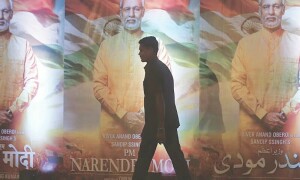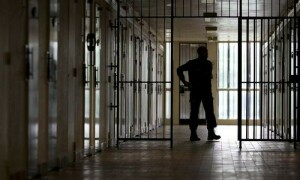
A sumptuous read, Finding Jinnah: Contemporary Art from Pakistan is sure to create a buzz in art circles. The title sits subtly against an image of the ever-famous Karakul cap that came to be associated with Mohammad Ali Jinnah. This poignant symbol of the ‘father figure’ invites the reader, literally, into ‘finding Jinnah’, setting the tone of what is to unfold in the book.
This hardcover publication by the Furqaan Ahmed Collection (FAC) has lavish, full-colour spreads of the works of 29 visual artists in the private collection, which address Jinnah as the subject. An important addition to art publications in Pakistan, it seems to push a critical edge in both design and concept. It is minimalist, uncluttered and finely tuned to support the bold visuals as well as the authoritative critique and investigative tone of the contributing writers.
Finding Jinnah celebrates fresh directions and experimentation in the specificity of art produced in the personal and political context of Jinnah. FAC is one of Pakistan’s largest collections of contemporary Pakistani art. It is also significant, as the material it generates in the form of publications allows the work to be reproduced broadly, and enables new readings into it by critics, historians and researchers on Pakistani art.
It is a big challenge to locate archival material on art, and students are at the disposal of mentors who are often equally unaware of the nature and chronology of artistic developments. Unlike the critical writing generated on Urdu and English fiction, material on visual arts is relatively scarce. At best, the critique is dispersed and embedded in reviews in newspapers and difficult to get to. Collectors are the custodians of art, especially in the absence of public museums. An artist whose work I was reviewing once commented that the published review will be a few paragraphs, and the work will be sold. What, after that, happens to all that the art had to say? And what of the writer’s writing: who critiques that?
In Finding Jinnah, we get multiple readings of the art under discussion. This allows space for this diverse collection to be curated far beyond its ‘market’ presence. The contributing writers — experts on art, history and culture — take difficult positions and address the problematics of the ‘representation/misrepresentation’ of Jinnah in the artistic and national discourse.
In the preface, ‘Finding Jinnah to Find Ourselves’, Dr Furqaan Ahmed notes that the “critical essays trace the connections between the imagery of Jinnah, the mythmaking and sacred narratives around him.” In his view, “the power of contemporary art is in its ideas and the conversations that it sparks.”

More significantly, the writers contextualise the subject, providing an interface of artistic practice (the concept, symbolism and the material) and the cultural/political scenario around Jinnah, which includes the commentary that emanates in political commentary, stereotypes and popular imagination.
A beautiful book features artwork on Mohammad Ali Jinnah from 29 visual artists, and engaging critical commentary that allows a diverse collection to be curated far beyond its ‘market’ presence
In her essay ‘Who Speaks for Jinnah’, Salima Hashmi writes of the book as “a significant new take on a tired narrative.” She notes that most of the artists featured (excepting Iqbal Geoffrey) were born post-1971, or in the Gen Ziaul Haq era, and “have known Jinnah as the presence in a predictable frame with a stamp of validity, for all time and in all places, for all transactions.”
Hashmi’s dismissive tone is mirrored in her references to Ayesha Jalal’s book The Sole Spokesman: Jinnah, the Muslim League and the Demand for Pakistan. Jalal, she says, tries to “demystify that elevated persona, reverently known as the Quaid-i-Azam or Father of the Nation — the Great Leader.” Hashmi writes that Jalal hoped to “remain a goad to new thinking and a challenge to all ruling orthodoxies.”
Hashmi chooses apt examples in the works of Geoffrey, Bani Abidi, Imran Channa and Ayaz Jokhio, among others, that lodge dissent through a satirical approach. She describes Abidi’s installation, ‘The Address’, thus: “Flowers on the table, a chair and an omnipotent Jinnah-on-the-wall. Jinnah is thus entrusted with the task of presiding over the conversation between the ruler and the ruled.” This video still was played on televisions in public locations in Lahore, such as barber/electronic shops, roadside tea cafes etc. Abidi’s art is situated outside the ‘established’ venues of art and dispersed into the public domain.

The works are cited throughout the essays, in a sense making it one reading with many windows to debate — a relevant model for students of art, history and culture. Jokhio’s portrait of the back of Jinnah’s head is also referenced by Ali Usman Qasmi, who asks if the portrait shows Jinnah turning his back on the nation, at the betrayal of his vision, or looking into the vast horizon to hint at the limitless possibilities to be explored. Qasmi notes that “the purpose of portraying Jinnah is not to write a history of art, but to talk about the history made by art.”
Channa’s digital print on Panaflex, ‘Finding the Real Jinnah’, plays with the theme of representing or misrepresenting the ‘Father of the Nation’ by “transposing the heads of Jinnah on to different bodies of Jinnah in what appears to be a group photograph” (from the artist’s statement). Interestingly, Ali Raza’s essay is titled ‘Will the Real Mr Jinnah Please Stand Up?’ and is an engaging narrative on the person of the well-dressed-in-Western-suits Jinnah who was the “toast of Bombay’s elite social landscape/ From the cigar-smoking ‘you may go to your temples and mosques’ figure of liberal Pakistan, to the Karakul cap- and sherwani-clad, Quran-quoting standard bearer of Islam and Indian Muslims.”
Apart from a frank debate on the nature of the state, the two-nation theory and, perhaps, a re-enforcement of the stereotypical criticism on Jinnah’s aloof personality, there is respite in Qasmi’s refreshing approach, such as a reprinted letter. Dated 1942, it is handwritten in Urdu to the Quaid by a class 5 student — Aziz-ur-Rehman of the Chishtia High School — who describes his reverence for the great leader and encloses a donation of eight annas for the Pakistan Movement. There are also engaging details on Jinnah’s official portrait taken by I. Sequeira and Sons in Karachi, and Jinnah’s portrayal in cartoons from the 1930s-40s.
Dr Furqaan Ahmed writes that the critique of political histories often occurs through art and literature, and outside the boundaries of official political discourse. Zarmeene Shah’s essay traces Jinnah in popular iconography and is injected with commentary that makes the icon approachable.

She compares the “solemn faced” sherwani-and-Karakul-cap portrait as seen at official events, to the photograph of Jinnah “[d]ressed impeccably (as always) in a dark suit, with a white shirt and striped tie/his salt-and-pepper hair slicked back from his face/holding a fluffy white West Highland terrier, while a cigarette dangles from his lips. This is the Jinnah I love ... charming and handsome, almost roguish in the dangling of the cigarette, behind which his sharp eyes glint.”
Shah finds Jinnah among the people — on the backs of trucks sharing space with Princess Diana and Shahid Afridi, on Pakola soda cans, murals and roundabouts, as he exists in his persona, his image “co-opted again and again to bolster conflicting agendas and garner the trust of the people.” Most notably, he is seen in Iftikhar and Elizabeth Dadi’s poster ‘General Ziaul Haq with Jinnah, Ayub Khan, and Other Military Heroes’, amidst Zia’s hands raised in prayer, the Kaaba, Minar-i-Pakistan and tanks.
Whether a “composite of Jinnah the man and Jinnah the idea” (Hammad Nasar), in a portrait looming behind a Christian janitor in Karachi in Arif Mahmood’s trademark monochromatic photograph, or in the image of the beautiful ‘Begum Rutti Jinnah’, a collage by Geoffrey, or as Adnan Mairaj’s graphic character ‘Quaid in Gotham City’, the publication brings home this point in Nasar’s essay ‘The Future is Certain: Jinnah’s Image in Pakistan’s Forever Changing Past’: “Histories are not facts, they are stories that are questioned or reaffirmed through cultural repetition.”
The reviewer is an independent art critic and curator based in Karachi. She can be contacted at amra_a64@yahoo.com
Finding Jinnah: Contemporary
Art from Pakistan
Coordinated by Ambereen Karamat
Photography by Humayun Memon
Le Topical, Lahore
ISBN: 978-9697120420
223pp.
Published in Dawn, Books & Authors, April 11th, 2021
















































Dear visitor, the comments section is undergoing an overhaul and will return soon.